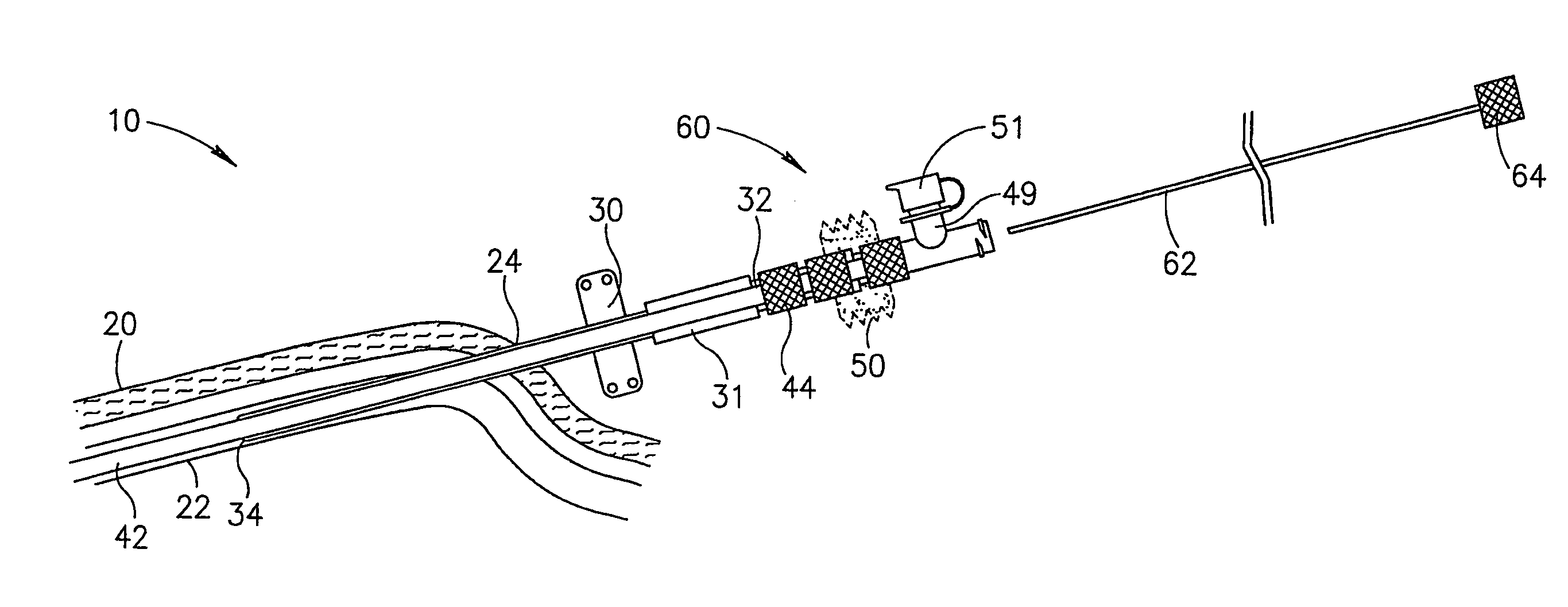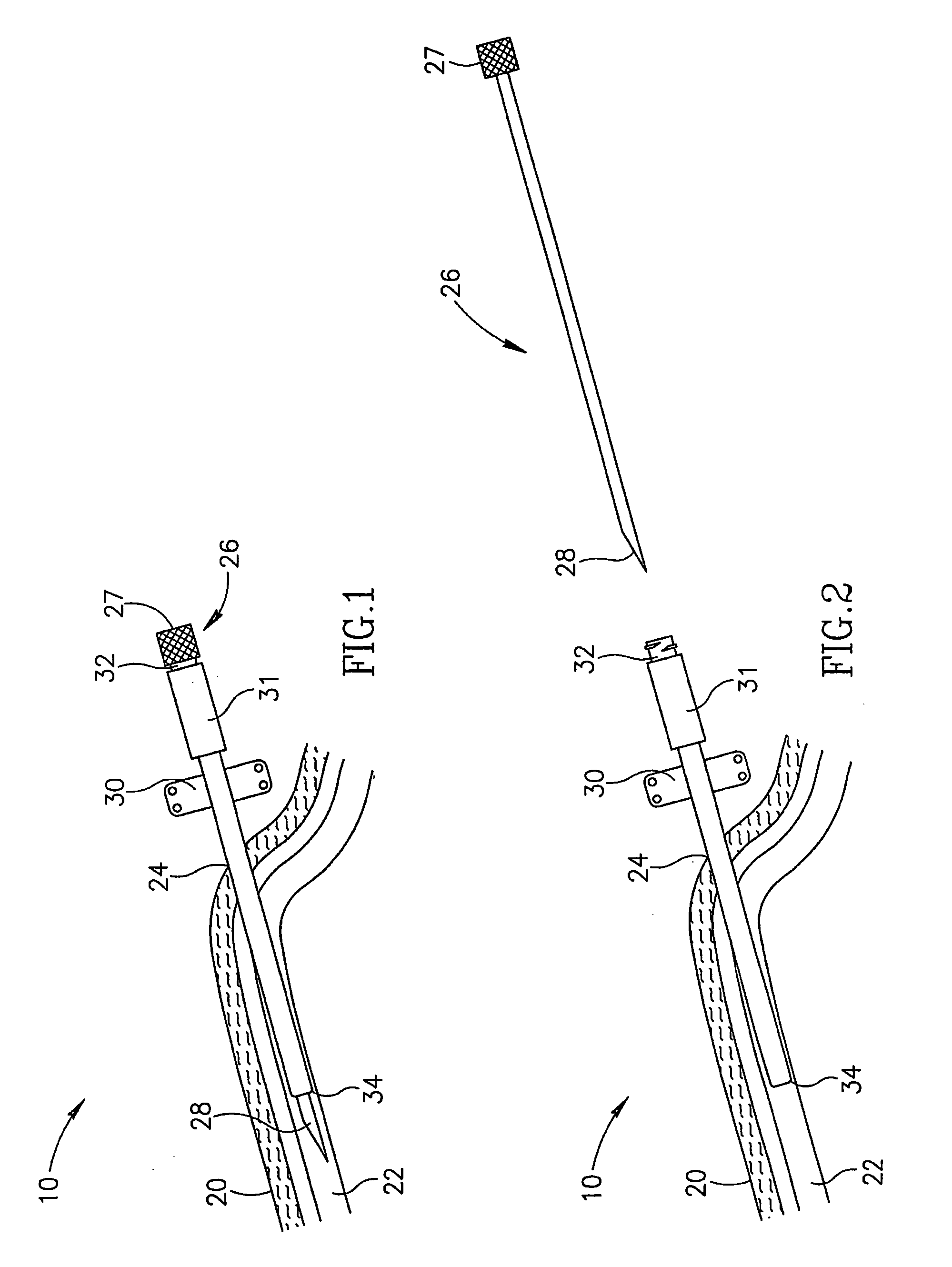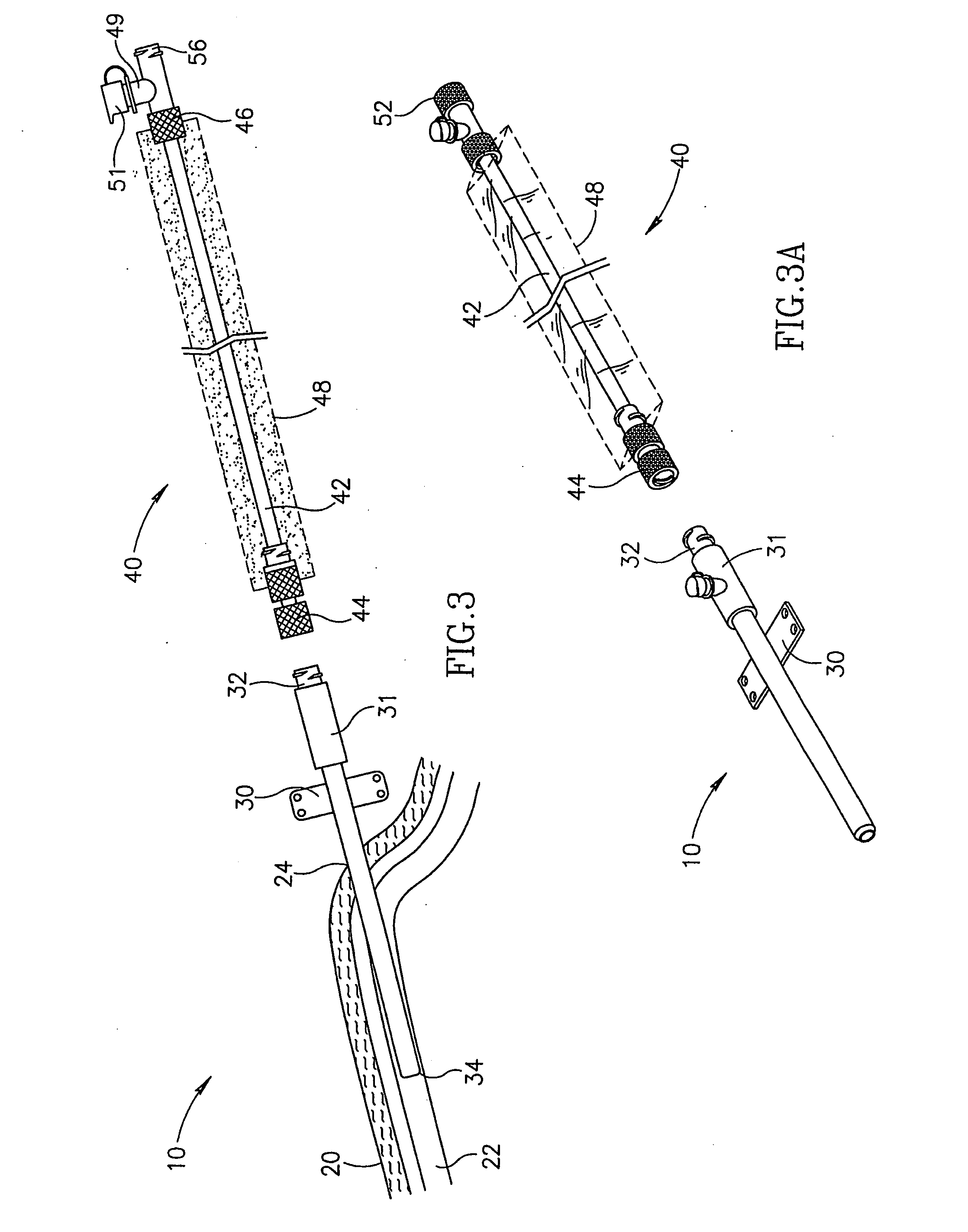Intravenous catheter assembly
a catheter and assembly technology, applied in the field of intravenous catheters, can solve the problems of increasing the risk of phlebitis, affecting the incidence of phlebitis, and increasing the risk of female subjects, and achieve the effect of increasing the stiffness of the catheter tub
- Summary
- Abstract
- Description
- Claims
- Application Information
AI Technical Summary
Benefits of technology
Problems solved by technology
Method used
Image
Examples
Embodiment Construction
[0086] The present invention relates to an apparatus and a method whereby intravenous therapy is applied to a subject, such that the incidence of phlebitis or thrombosis in a vein of the subject is substantially reduced without necessitating a multiplicity of intravenous entries. This is generally achieved by the use of a short multi-use entry-port or a standard intracatheter disposed in a vein of the subject. Thereafter, a catheter having a flexible tube or cannula of a predetermined length, is attached thereto and slidably inserted therethrough into the vein of the subject. This procedure is sequentially illustrated in FIGS. 1 to 5 and described hereunder, in accordance with a preferred embodiment of the present invention. To reduce the risk of phlebitis or thrombosis, the catheter is periodically replaced with another of a different length, or the position of the catheter adjusted, without necessitating removal and relocation of the entry-port.
[0087] Referring to FIG. 1 there is...
PUM
 Login to View More
Login to View More Abstract
Description
Claims
Application Information
 Login to View More
Login to View More - R&D
- Intellectual Property
- Life Sciences
- Materials
- Tech Scout
- Unparalleled Data Quality
- Higher Quality Content
- 60% Fewer Hallucinations
Browse by: Latest US Patents, China's latest patents, Technical Efficacy Thesaurus, Application Domain, Technology Topic, Popular Technical Reports.
© 2025 PatSnap. All rights reserved.Legal|Privacy policy|Modern Slavery Act Transparency Statement|Sitemap|About US| Contact US: help@patsnap.com



